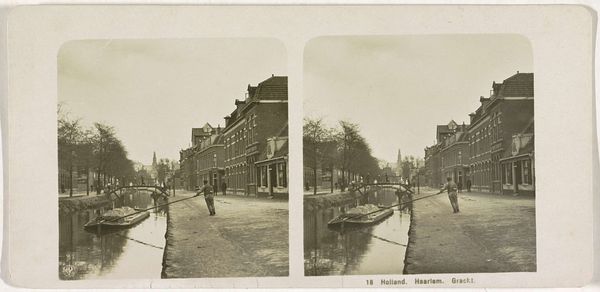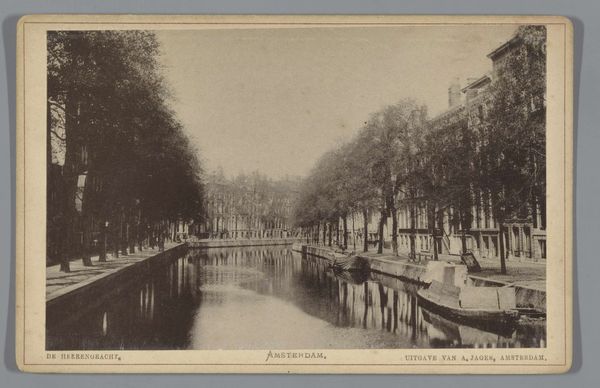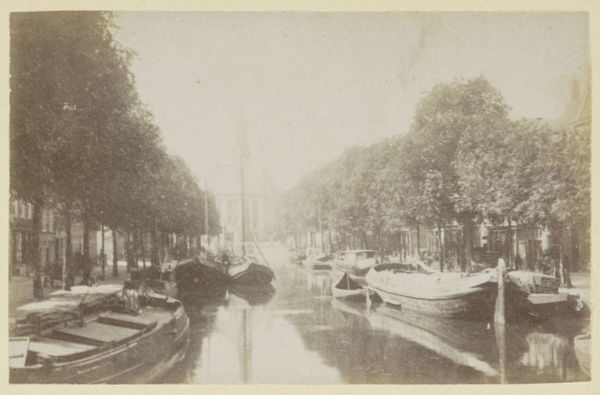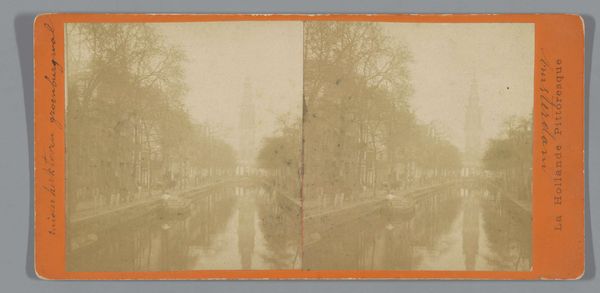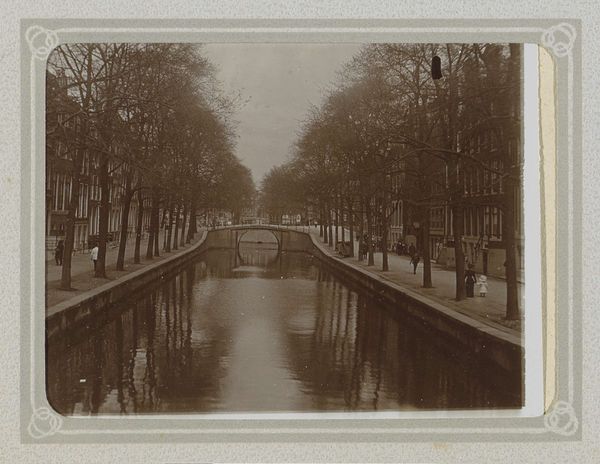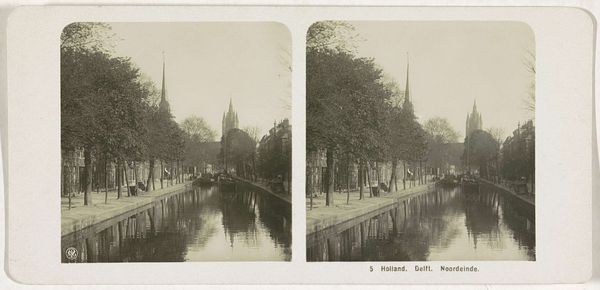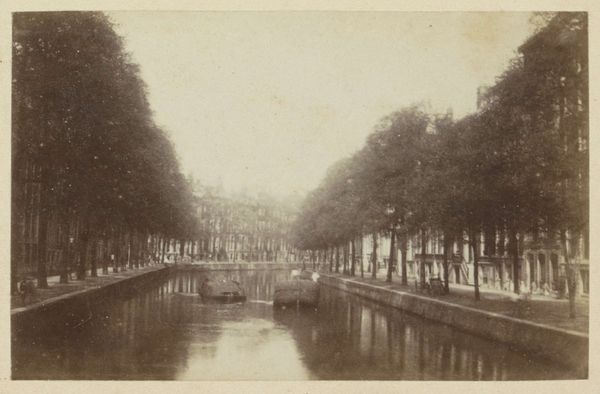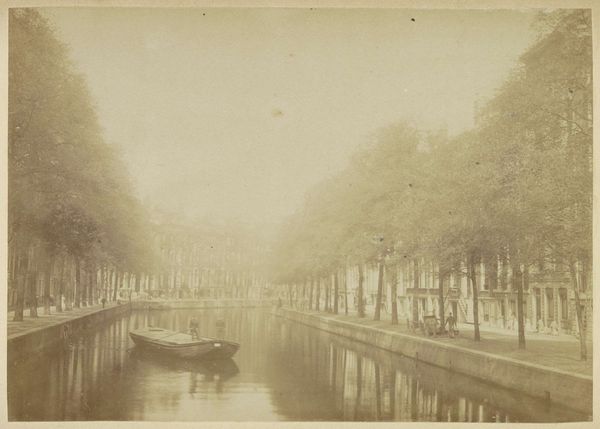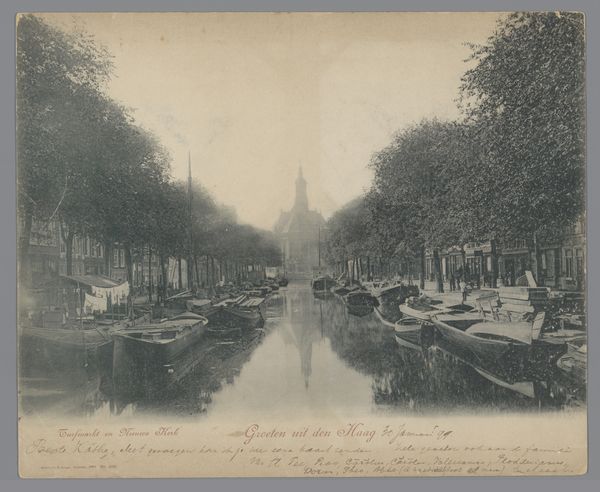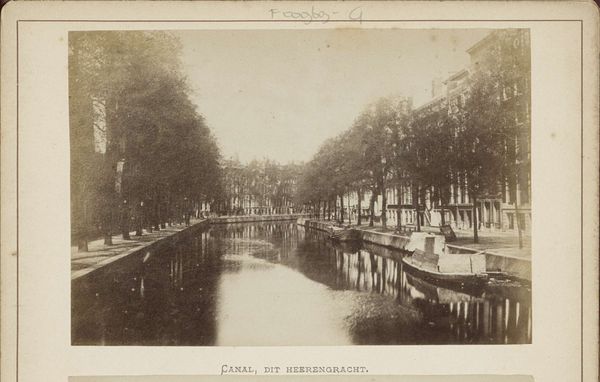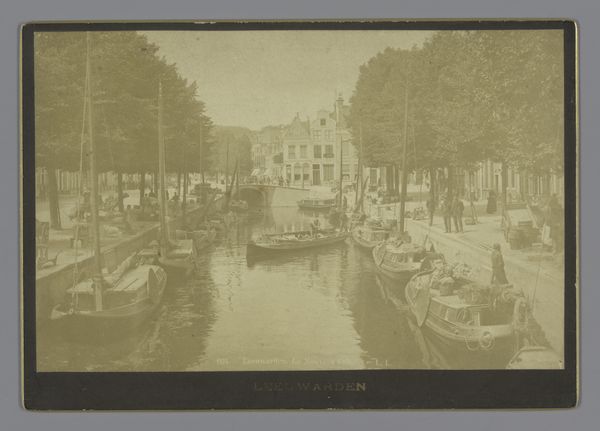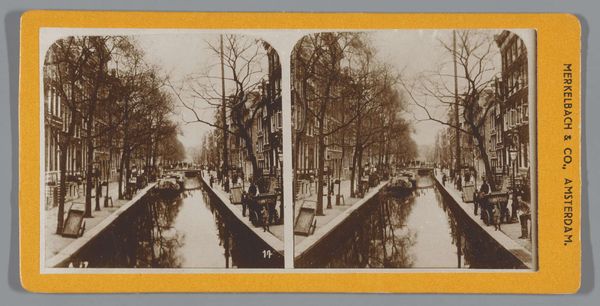
photography, gelatin-silver-print
#
pictorialism
#
landscape
#
photography
#
gelatin-silver-print
#
cityscape
#
realism
Dimensions: height 88 mm, width 180 mm
Copyright: Rijks Museum: Open Domain
Curator: We’re looking at a gelatin silver print entitled "Groeneburgwal te Amsterdam," created sometime between 1900 and 1940. Editor: The somber mood of this image immediately strikes me. It’s visually still and calm but carries an undercurrent of perhaps… melancholy? Curator: Pictorialism shines in the way the light filters and diffuses across the composition, creating a soft focus. Look at the reflections on the water. The dark, muted palette emphasizes form and tonal values, really embracing realism. Editor: I see a cityscape, but it is very much an unpopulated one. There is little evidence of any inhabitants except from an eerie absence of any obvious citizens. How do we situate photographs like this when they seemingly mask very obvious truths about their period of creation? How are labour or indeed communities obscured from our views of art? Curator: Interesting question. Formally, it utilizes a balanced symmetry, bisected by the canal. The bridge acts as a central vanishing point, drawing the eye to the distant steeple. Notice how the framing trees function as natural borders. Editor: Right. It invites considering class disparities within Amsterdam at this time. What do we actually see when faced with such highly composed representations? The photograph presents an affluent location where the social hierarchies are very rigid and very much at play. What about marginalized populations such as women or ethnic communities? Curator: Your perspective enriches my own understanding by prompting reflection beyond mere aesthetic appreciation. The city is, after all, both a physical and social construct. Editor: Agreed. I do think this picture provides us an interesting framework, however, from which we can actively challenge notions of national identity or even ideal societal behaviour. Curator: Indeed, perhaps by closely examining the art, in conjunction with theory, can we unveil complex and often-hidden narratives, inviting critical engagements. Editor: Absolutely. Together, we both see that an image is more than meets the eye; it's a lens reflecting society's ever-evolving story.
Comments
No comments
Be the first to comment and join the conversation on the ultimate creative platform.
